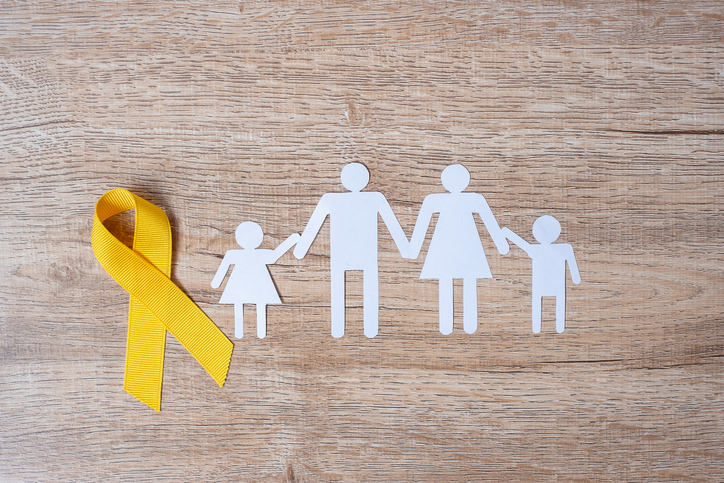Recently released CDC survey data reveals that 1 in 4 young adults in the United States has considered suicide in the last month because of the pandemic. In addition to a quarter of those between the ages of 18 and 24, over 10 percent of all survey respondents admitted to contemplating killing themselves in the last month because of the pandemic. And over 30 percent of those surveyed responded that they had symptoms of anxiety or depression in the previous month.
An April article in the Journal of the American Medical Association anticipated those dismaying results. That article warned that a “perfect storm” of economic stress, social isolation, decreased access to religious services, and several other pandemic-related factors would likely lead to a rise in suicide.
Amid the pandemic, it is certainly easy to get the impression that things are only getting worse. But the truth is that life is still worth living and that there are many reasons to take heart even in these times. If you are feeling depressed due to the pandemic, please consider these five points. (But, first, if you are having suicidal thoughts, please reach out to a counselor or call the National Suicide Prevention Lifeline at 1-800-273-8255).
1. Humanity has never been better prepared for a pandemic, scientifically, or technologically. As disruptive as the pandemic is, things would have been far worse if it had struck a couple of decades ago. Imagine trying to keep up-to-date with the latest health developments without the Internet, or how much harder it would be to self-quarantine without using your smartphone to order groceries delivered to your door. During this time of social distancing, let technology help you. I have written previously that social distancing “need not mean social isolation.” Today, virtual social interaction is more accessible than ever, from online religious services to virtual happy hours and other get-togethers. Seek out and take advantage of such opportunities.
2. Humanity has faced far worse. Keep a proper perspective by remembering that terrible diseases have always plagued humanity. The Bubonic Plague had a mortality rate of up to 70 percent; today, antibiotic treatments cut that risk to 10 percent. Smallpox had a mortality rate of 30 percent. Thanks to a vaccine, smallpox was eradicated in 1980. While the death rate for COVID-19 is still a matter of debate, it appears to be far less deadly than those ailments. Early in the pandemic, the World Health Organization estimated the fatality rate for COVID-19 to be 3.4 percent. Other estimates claim that the fatality rate is much lower than that. And unlike most deadly diseases, COVID-19 often spares the very young. According to the American Academy of Pediatrics, as of mid-August, the COVID-19 mortality rate among U.S. children is between 0 and 0.6 percent.
3. The novel coronavirus is less contagious than some diseases. The risk of COVID-19 transmission by inanimate surfaces or objects is likely small. The main mode of spread is airborne person-to-person transmission. Compared to measles, a disease so contagious that each infected person infects between 12 and 18 new people in an unvaccinated population, each COVID-19 carrier probably infects between 2 and 4 new people on average. And mask-wearing may cut the risk of catching the disease by 65 percent. Everyone has a different level of risk tolerance, but for most people without pre-existing conditions, following some simple precautions—like putting on a mask—makes it possible to engage in at least some in-person interaction safely.
4. In dark times, “look for the helpers.” Charity is, in many cases, rising to the occasion to help those experiencing hardship during this time. Online groups have formed via social media to help coordinate volunteers to deliver groceries for elderly or immuno-compromised individuals and offer free online tutoring to help students learn remotely. One way to volunteer is to donate your computer’s spare power toward virus research through the “Folding at Home” project. Many philanthropists have also stepped up to provide generous funding for efforts to combat the novel coronavirus. And the George Mason University economist Tyler Cowen has created a $1 million prize to reward various breakthrough developments in combating COVID-19.
5. Remember that while you are living through a time of great turmoil, this may also serve as a historical inflection point that brings about some positive changes. There aren’t many silver linings to a deadly event, but the pandemic has pushed humanity to innovate and has hastened the pace of progress in many areas. For example, the pandemic has helped to speed the unraveling of burdensome regulations that hampered telemedicine adoption. The unprecedented rise in telework, to name another example, may, in many cases, represent a permanent change that could help to make work more satisfying and productive.
The world is certainly a grimmer place than it was before the pandemic. But it is not a hopeless place, and there remain reasons for hope and rational optimism.





